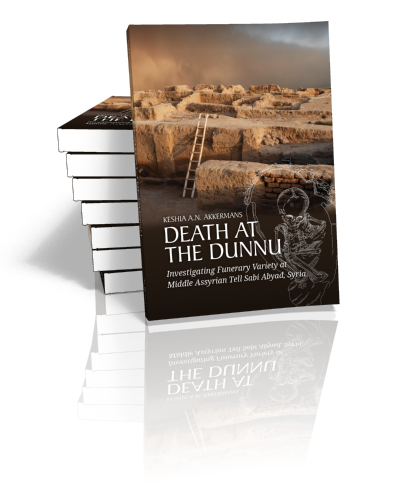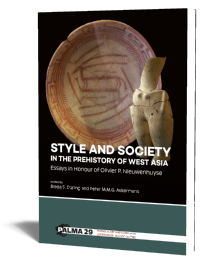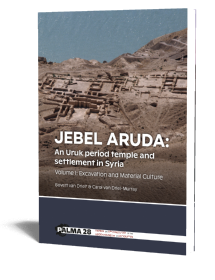Abstract:
During the roughly hundred years (ca. 1225 – 1125 BCE) that the Middle Assyrian dunnu at Tell Sabi Abyad was in operation, some forty-nine individuals were interred in graves of a striking diversity. In this book their burial type, location, orientation, position, grave goods and osteological data are analysed in order to generate new insights on Middle Assyrian society. Most graves appear to have been inhumation graves dug into abandoned spaces in and around the settlement. Men, women, and children were placed in mudbrick-lined cists, unlined pits, pre-existing architecture, and jars. Burial practices similar to those at Tell Sabi Abyad are found at many other Middle Assyrian sites, and suggest they were part of an overarching Middle Assyrian funerary repertoire.
At the same time, Tell Sabi Abyad also contained cremation graves – a burial practice that is at odds with Mesopotamian views of the afterlife. These may belong to (Hurrian) deportees that chose to adhere to the funerary traditions of their homelands. The cremated remains were deposited in jars that were subsequently buried in the ground or buried at the place of the funeral pyre. While almost all graves contained some form of grave goods – usually consisting of items of bodily adornment and ceramic bowls placed close to the head and hands – the two graves with the most grave goods were both cremation graves. Their inventories contained sumptuous items of Middle Assyrian style and iconography, suggesting people of non-Assyrian backgrounds were just as capable of socio-economic success in Assyrian society.
Contents
1. Introduction
2. Data and Methodology
3. Theorizing Death
4. The Middle Assyrian State: Culture-Historic Frameworks
5. Introducing Tell Sabi Abyad
6. The Graves of Sabi Abyad
7. Burial in the Middle Assyrian Empire
8. Concluding Death at the Dunnu
Bibliography
Figures, Tables, and Appendices
Burial Catalogue


Keshia A.N. Akkermans
MA
Keshia A.N. Akkermans is an alumna of the Faculty of Archaeology, Leiden University, where she specialized in the archaeology of the ancient Near East. She has worked for the Dutch National Museum of Antiquities (RMO), and is currently doing her doctoral research at the University of Liverpool. Her research includes studies on the rock art and the desert tombs of the Jebel Qurma region in north-east Jordan, funerary practices of the Middle Assyrian period, and ground stone tools in Pre-Pottery Neolithic Anatolia. Keshia has been involved in fieldwork in the Netherlands, Nicaragua, Oman, Cyprus, Jordan, and Turkey.
read more











